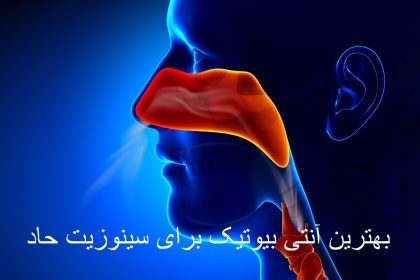Gymnastics balance movement or handstand is one of the special yoga exercises. Of course, it is not only yogis who stand on their hands! There are gymnasts and other athletes who have the habit of walking on their hands!
If you have loved gymnastic balance movements since childhood, this vitamin article is exactly for you! Go through the exercises step by step and you will be amazed at your success.
What is balance movement?
The balance movement or handstand in sports such as yoga and gymnastics is a movement in which the athlete keeps his body weight on his hands while placing his feet directly in the air, simply standing on his hands!
To learn balance, you must have a strong body and good mental balance. Because in this movement you have to keep your body in a vertical position using your hands; This is one of the most basic positions in gymnastics and requires a strong upper body that also has good control over its core muscles.

Teaching gymnastic balance movements
To perform or teach balance, remember that this movement cannot be achieved overnight or with several times of training. You definitely need a lot of practice and perseverance and you must be patient. Now we teach balance movement step by step.
Do each step of these exercises and continue until you don’t feel fear, fall and danger and are completely comfortable with the height you are taking.
Step 1: Warm up your body!
Warming up before any exercise is necessary, and it is much more necessary for a specific exercise such as balance gymnastics. First, warm up your muscles and joints with kinetic and stretching movements. Then do the next steps in order.
Step 2: Get in the starting position!


The starting position for handstand is as follows:
- Lie on the floor with your back against the wall and lean your feet against the wall (just like the picture);
- Don’t let your back become hollow;
- Your distance should not be too long and not too short. Adjust the distance yourself;
- Then place your hands on the ground along the shoulders;
- wrists and shoulders should be in the same line;
- The fingers should be completely spread apart and your weight should be spread over the entire palm; (Do not put your body weight directly on the wrist)
- At the same time, put your feet on the wall and try to stretch the body slowly;
- The neck should neither lean outward nor inward and should be along the spine.
Step three: Put one foot against the wall!


- Slowly start climbing the wall with bent legs;
- Take your weight off your feet little by little and put it on your hands;
- If your arms are strong enough to support the weight, continue climbing the wall.
Fourth step: remove both feet from the ground!


- Continue the exercise until you are completely up the wall and make a 90 degree angle with the floor;
- If you feel unstable or fall, you should stop the exercise and repeat the previous steps again and again;
- Elbows and shoulders should never bend in the opposite direction;
- Your wrist should not bend outwards.
Fifth step: lift your legs completely and try to separate from the wall!


- After you have mastered the third step of the balance movement, start by lifting one leg up;
- This situation requires the involvement of the whole body;
- At this point, neither of your feet is on the ground and both are on the wall;
- To fully stand on your hands, first separate one leg completely from the wall and draw like the picture;
- Make sure your back is not hunched and your neck is in line with your spine. The whole body should be in a vertical line; Even when one foot is still against the wall;
- Contract the leg resting on the wall and lean on the wall with only your toes;
- The leg that is straightened should also be contracted and the toes extended;
- Be careful not to put too much pressure on your hands and wrists to stand on your hands and balance.
Step 6: Stand completely on your hands and balance!


Once you’ve mastered the single leg gymnastic balance move, it’s time to move on to the next step and the next challenge. It is better to have a friend by your side during this step. Be sure to try to concentrate enough at this stage and have your mind ready to stand on your hands.
- To perform this step, you need physical strength and flexibility, as well as strong kicks and balance;
- At this stage of the balance movement, you must separate both feet from the wall and stand straight;
- Also, your distance from the wall should be small so that if you are prone to fall, you can get help from the wall;
- Hit the wall again with your foot to separate from the wall;
- Then slowly stand straight facing the wall and practice standing on the wall in the original position.
- You should face the wall at a sufficient distance and try to get up by kicking the dominant foot against the wall.
Last step: Don’t forget to chill!
Cooling down the body, like warming up, is very important in all sports and performing various movements. Be sure to do the necessary stretching movements to return to the initial state and recover the body after your training is over. Don’t quit your workout without cooling down. This will cause you pain and even injury.
Exercise tips that we should follow while standing on our hands
Now we will introduce you some solutions that will make it easier for you to perform balance movements in gymnastics. So read these tips carefully. Do these exercises and strategies for handstand training continuously to achieve the best results.
Get help from the wall for balance!
Using the wall is very useful for improving strength, building endurance and strengthening the vertical line of your body. When you use the wall as a shield, you’re not actually standing on your hands. The wall helps you stand on your hands more easily.
Balance gymnastics requires technique, balance, and body awareness, which you can acquire through consistent practice.
Bring your thighs together!
Not pressing the legs and thighs together is a common mistake among beginners. When you turn upside down, hold your body as tight as possible. You can put more pressure on your upper body and core by squeezing your thighs together.
The combination of this pressure creates a lot of force and pressure by sharpening the toes and pressing the buttock muscles. The more pressure generated, the more balanced you will be and the less effort you will need to maintain balance.


Play the piano with your hands!
You don’t have to take a piano class or learn to play the piano with your feet. To teach balance on your hands, the important thing is the distance between your fingers and the pressure points that should be on your hands. Your fingers should be spread apart like playing a piano.
This creates a wider support and more strength for movement. Toes should be separated and more balanced. When you stand on your feet, the pressure is spread over the toes, soles, and heels.
When performing this movement, the pressure points on the hands are similar to the pressure points on the feet when standing. After all, we should basically use our hands like our legs. The pressure should be on the tips of the fingers, the beginning of the claws and the heel of the hand (the palm next to the thumb). Then the paws should be raised. You should not lean your weight forward or backward too much, because your balance will be disturbed.
Engage the shoulders well!
Sometimes the reason for the failure to perform this movement is the weakness of the shoulder muscles. To perform the balancing movement, you definitely need strong head and shoulder muscles. Relaxing the shoulders during the movement puts more pressure on the chest.
Your back will probably bend more and you will have to work harder to keep your balance. To increase the balance in this exercise, use the shoulders well and use their muscles. To achieve this goal, you must do the “reach the sky” exercise.
Strengthen your concentration!
Now we introduce a simple exercise to improve your concentration in balancing. This exercise can be done while standing.
- Choose an object (something small);
- Look at it for 60 seconds without being distracted;
- This will help you to easily increase your ability to concentrate.


Be sure to get the desired result!
Try to keep the center of gravity between your shoulders in the upper back, not the lower back. In handstands, many people compromise upper back stiffness by allowing gravity to fall on the lower body. Be sure that with constant practice and paying attention to small details, you can do the balance movement in the best way.
Why can’t I stand on my hands?
No matter how athletic or strong we are, still learning to stand on our hands requires a lot of time and practice. If you’ve been trying to do a gymnastic balance move for a while and you’re not making the progress you want, there could be a number of reasons.
1. weak wrist
Many people neglect to strengthen their wrists in balance exercises. In the balance movement, you keep all your weight on a relatively small joint. If you have never stood on your wrists, then your wrists are probably weak and you need to do wrist strengthening exercises. One of the best ways to do this is to do wrist exercises every day, especially if you’re new.
2. Weak muscles of the upper body and middle body
When you balance, the entire weight of the body is supposed to be on the shoulders and arms, and if these muscles are weak, they cannot hold you at all! Also, inability to control the trunk and inability to maintain balance can disrupt handstand.
3. fear of falling
Handstand is a unique skill; Because mental limitations can play a role as much as physical limitations. The fear of falling forward is an important issue that you should pay attention to, in this case it is recommended to balance against the wall first so that you are not afraid of falling. You have to practice so much that your fear disappears and it becomes normal for you.
4. weak legs
Yes, lower body muscle strength plays an important role in balance movement, even though it doesn’t seem like it! Apart from wrist strength and body balance, your legs should be strong enough to be able to throw your legs and stand in a vertical position during the start movement. If the strength of the foot strike is low, your body will not be vertical at all when you want to balance.
5. Focus and balance
Having balance while balancing is very important and vital. Many adults think that balancing happens only at a certain point, but in fact, you have to balance at all times when you are engaged in this movement.
Learn to spread your weight on your palms and control your wrists and fingers. Then learn to create this balance in the whole body, i.e. keep your body balanced with delicate movements of the legs, even the shoulders. Practice and repetition will increase your balance.
6. Wrong technique
Handstand is a skill that needs to be “taught” and practice alone will not make you successful in balance. Improper hand placement, lack of proper trunk control training, or incorrect kicking of the feet to start can all cause your balance to fall. For example, placing the hands at a distance can cause imbalance.
7. Not enough practice
Do you seriously practice balance? Or do you only play occasionally? If you’re just playing, that’s fine, but you probably won’t make much progress.
If you balance and play for a few minutes during your yoga or crossfit or gymnastics class, great! However, progress in balance movement requires more specific training.
Who should not balance?
There are a number of considerations for handstands. If you have certain health conditions, this move may not be recommended. Ask your doctor first, but generally people with back, shoulder or neck injuries should not do this. Also, if you have high or low blood pressure, and heart disease, ask your doctor for permission to balance.
Also, balancing is prohibited for pregnant mothers or young children!
Practicing balance without proper supervision, especially in environments without proper mats or safety measures, is dangerous and not recommended at all.
If you are not afraid of heights or being upside down, there is no need to balance! Forcing yourself into a situation that causes anxiety can be counterproductive and extremely unsafe.


How to walk with hands?
After you have mastered balancing (standing on your hands), you can slowly learn to walk on your hands!
It is enough to balance facing the wall and within two steps of the wall, after standing on your hands and stabilizing your body, take one step forward with your hand. Take a step back and do it again. Do this exercise so much that you can walk without the wall. To perform this seemingly simple exercise, you need very strong arms, shoulders, wrists and mid-body, and you must plan to strengthen these organs.
final word
Gymnastics balance movement or handstand is an acrobatic movement that professional athletes are usually able to perform. Balancing gymnastics requires concentration and physical preparation. In this article, we taught all the tips of balance training in a visual way, to easily perform the movement of standing on the hands.
Source: womenshealthmag
RCO NEWS
RCO
















